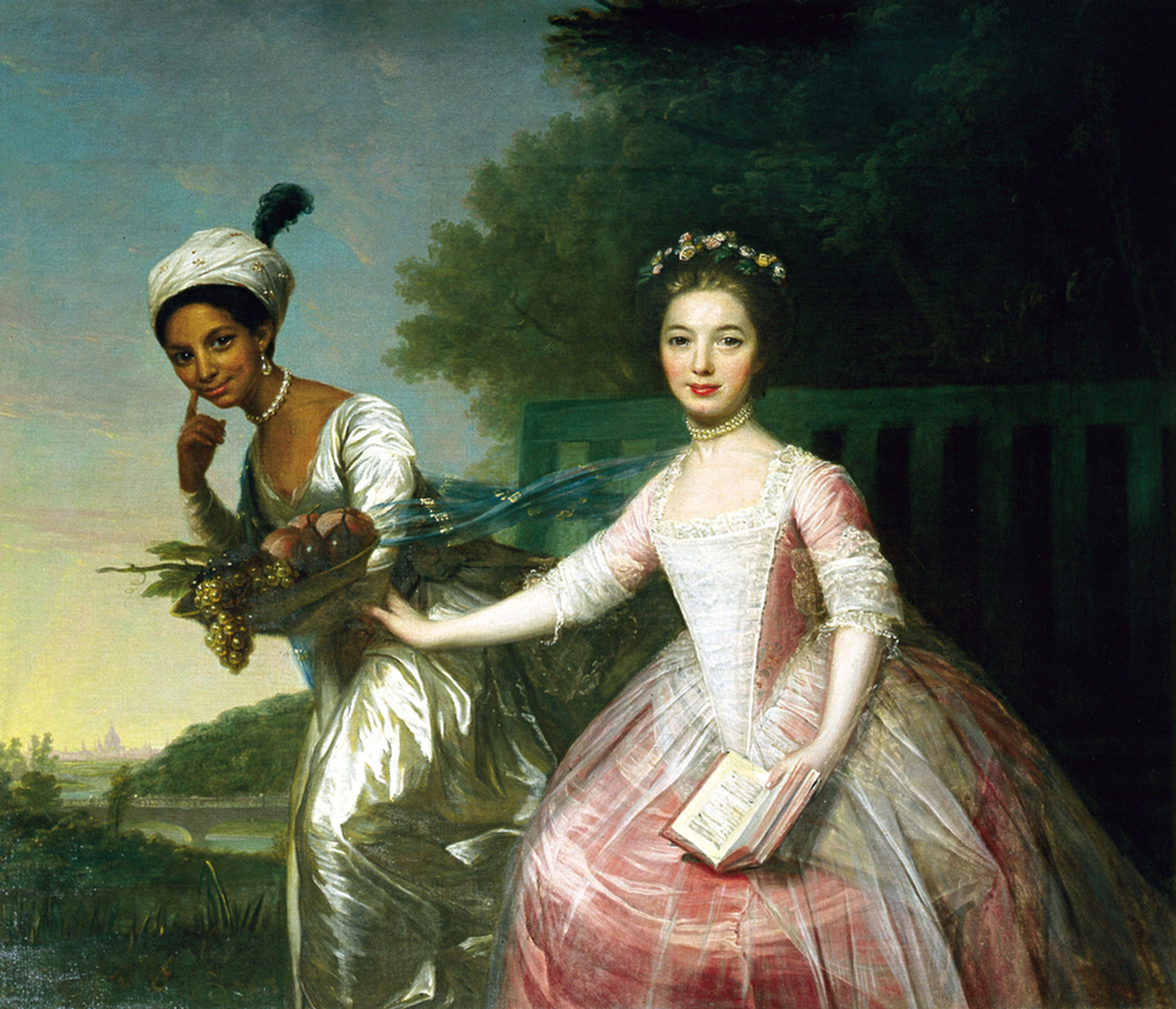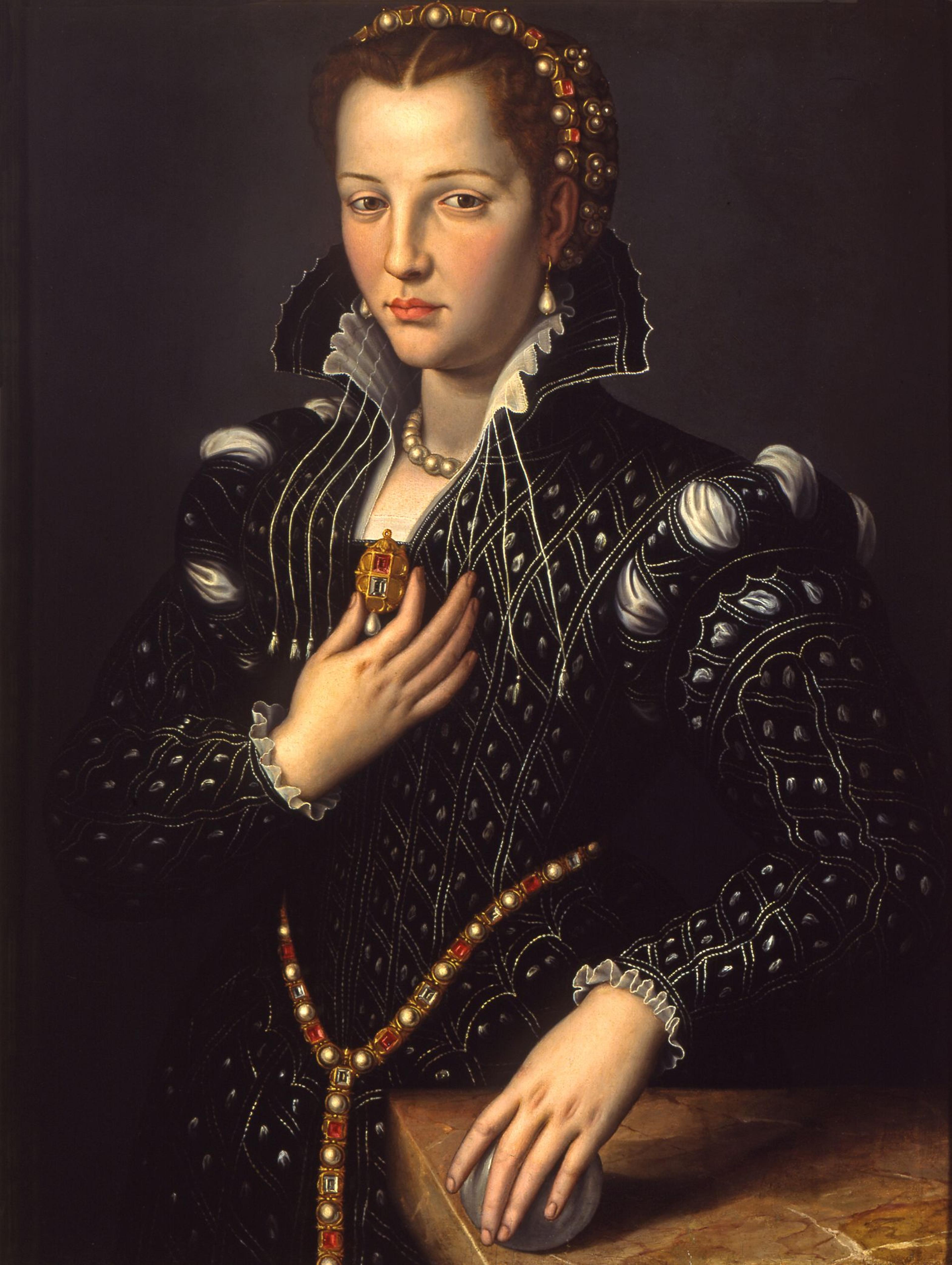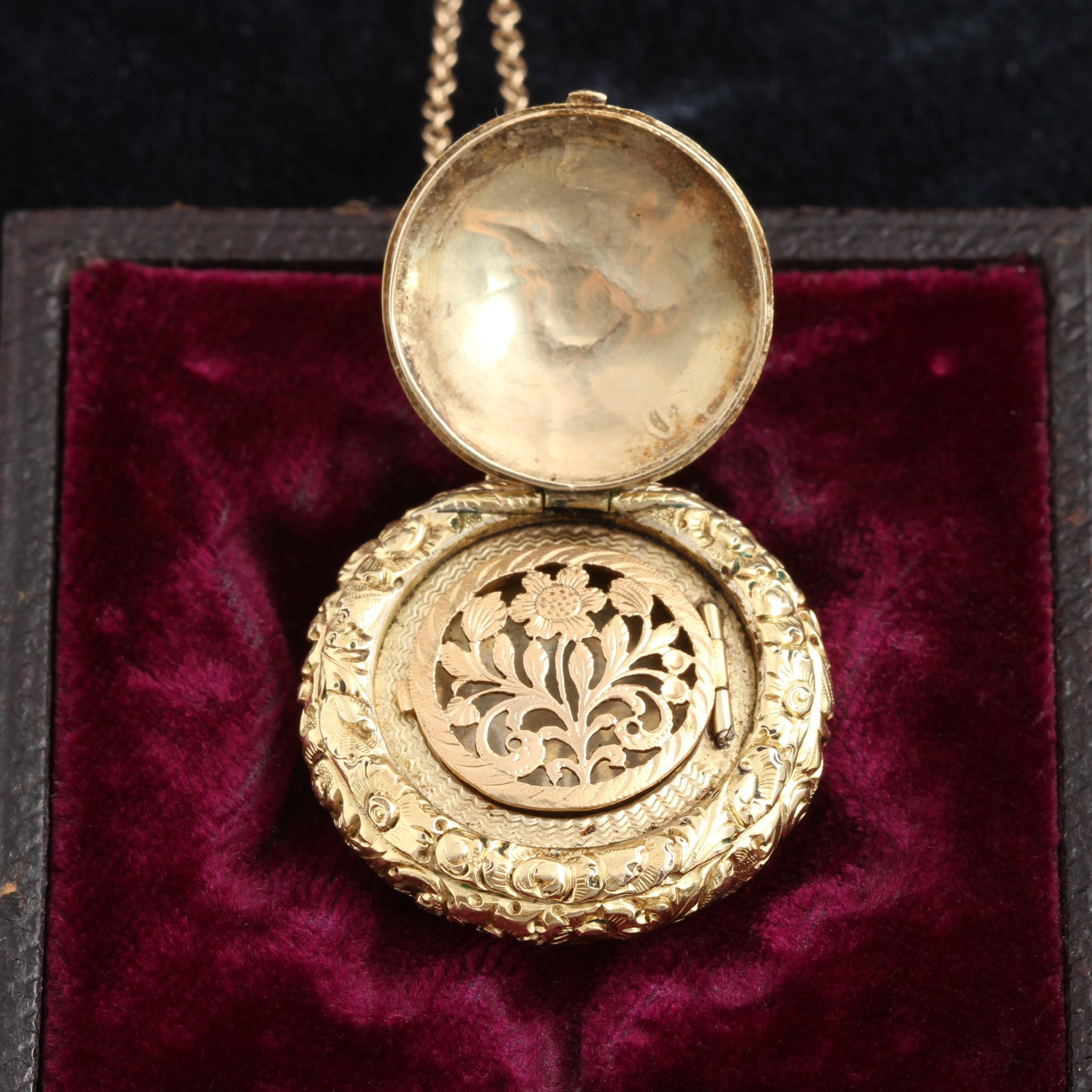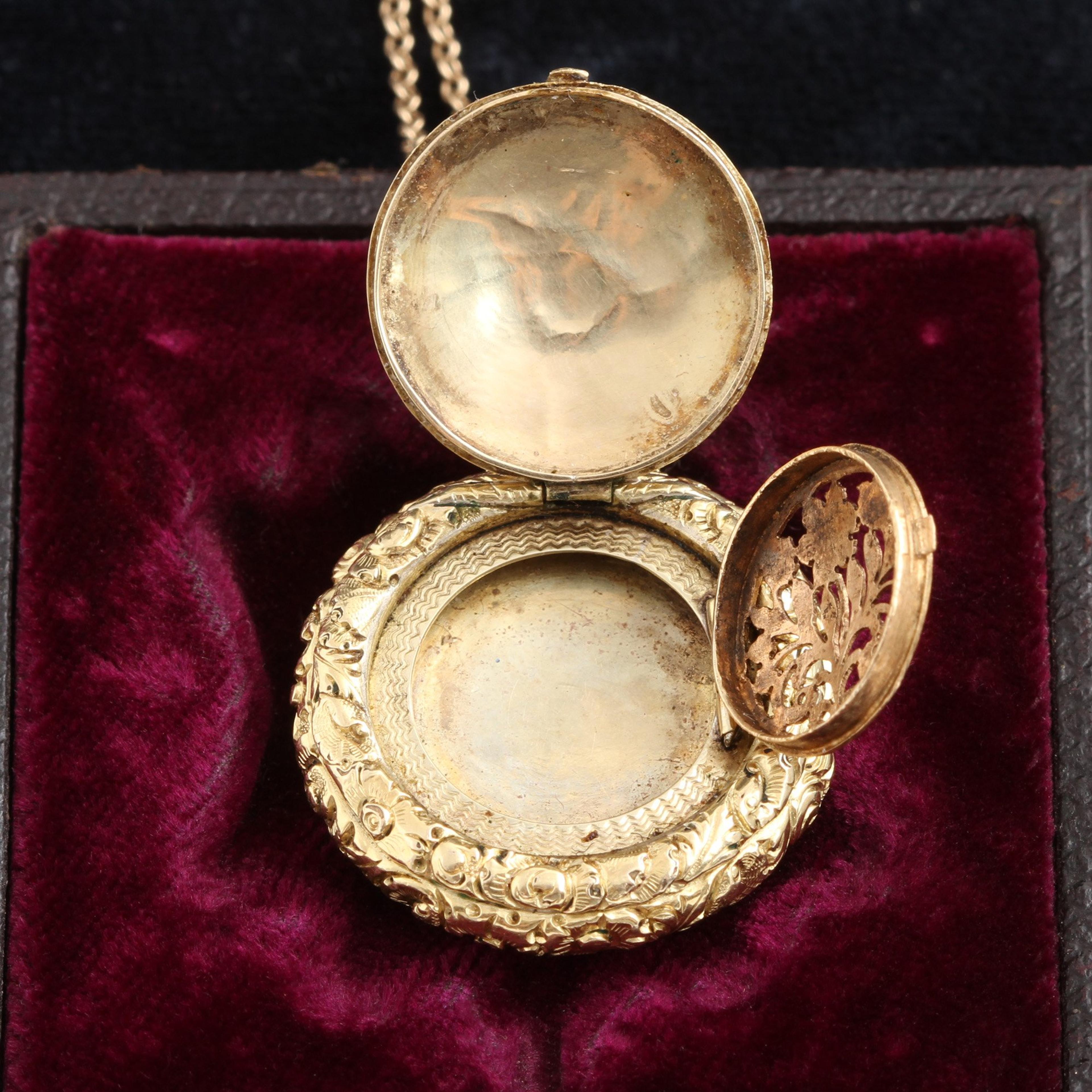Personal cleanliness standards in the 19th century were not quite what they are today. Prior to the debunking of the myth that bathing was dangerous for the health, the widespread availability of soap and proper sewage treatment, people needed a way to guard against the unpleasant (often vile) odors encountered in living everyday life. Enter the vinaigrette! These tiny lockets with an open grille were designed to house a cloth or piece of cotton wool soaked in perfume that could be held to the nose in moments of olfactory assault. Sometimes the cloth would be doused in vinegar (which gives this utilitarian jewel its moniker) for its perceived medicinal qualities. This wonderfully ornate Georgian vinaigrette is fashioned in 14k gold with a photo locket at the front and and an engine turned panel at the back which opens to reveal a beautiful floral grille. Hangs from a new 18" 14k gold chain.
thedetails
- Materials
14k gold (tests), glass, new 14k gold chain.
- Age
c. 1820
- Condition
Very good.
- Size
1.5" length including the bale, 1" diameter, 18" chain.
Need more photos?
Send us an email to request photos of this piece on a model.

Aboutthe
GeorgianEra
1714 — 1837
As imperialist war raged in the Americas, Caribbean, Australia, and beyond, the jewelry industry benefited: colored gems from all over the empire became newly available. A mix of artistic influences from around Europe contributed to the feminine, glittering jewels of the era. Dense, ornate Baroque motifs from Italy showed up in Georgian jewelry, as did French Rococo’s undulating flora and fauna. Neoclassical style made use of Greek and Roman motifs, which were newly popular due to the recently uncovered ruins of Pompeii and Herculaneum. Lapidary methods improved: the dome-shaped rose cut was popular, as was the “old mine cut,” a very early iteration of today’s round brilliant cut.
The boat-shaped marquise diamond cut was developed around this time, supposedly to imitate the smile of Louis XV’s mistress, the marquise de Pompadour. Paste — an imitation gemstone made from leaded glass — was newly developed in the 18th century, and set into jewelry with the same creativity and care as its more precious counterparts. Real and imitation gems were almost always set in closed-backed settings, lined on the underside with thin sheets of foil to enhance the color of the stone and highlight it's sparkle. This makes Georgian rings tough for modern women to wear, especially on an everyday basis: genteel, jewelry-owning ladies of the 18th century were not famous for working with their hands like we are. Nor did they wash their hands as much as we do. Water will virtually ruin a foiled setting, so take special care with your Georgian ring. Very little jewelry from this period is still in circulation, and it's very difficult to repair.




